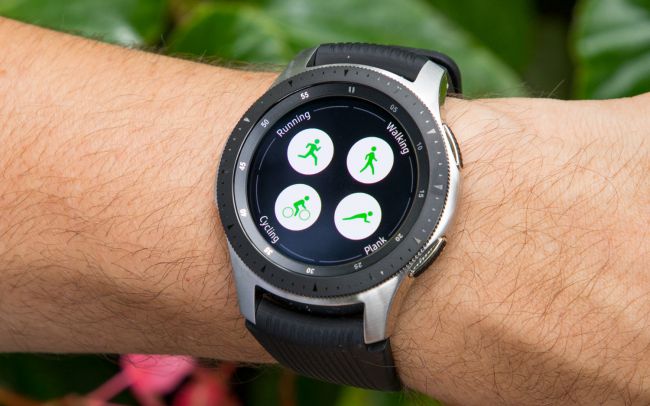Wear OS will need a lot more than Samsung Galaxy Watch 4 to succeed
Better looking watches are just half the equation

Two of the biggest rumors swirling around this week’s Google I/O developers conference is that Google could announce the Pixel Watch, and that the upcoming Samsung Galaxy Watch 4 will ditch Tizen for Google’s Wear OS. But, it’s going to take a lot more than fancy hardware to convince people to pick up a Google-powered smartwatch.
It’s no secret that I’m not the biggest fan of Wear OS, Google’s smartwatch operating system. And it looks like a lot of other people aren’t either. In 2020, the top smartwatch makers were, Apple, Xiaomi, Huawei, Samsung, and Fitbit, which combined made up about 75 percent of the market. None of those watches run Wear OS. (Technically, the Xiaomi Mi watch does, but it’s so heavily modified you may as well call it something else).
- Google I/O 2021 preview: What to expect
- Here are the best smartwatches
- Plus: Wear OS looks confirmed for Galaxy Watch 4, but killer feature is out
Of the best-selling smartwatches on Amazon, none of the top 20 used Wear OS: It was either Apple, Fitbit, Samsung, or a no-name brand with a no-name OS. It was a similar story at Best Buy, where the first Wear OS smartwatch appears even lower on the best-sellers list.
Wear OS: Google’s not-so-benign neglect
Google aspired for Wear OS to become a common operating system it could license to dozens, if not hundreds of smartwatch makers, like it does with Android. However, where Android has benefitted from regular updates and new features, Wear OS updates have come in trickles.
The day before Google I/O, the company teased “a brand new Wear version,” but little else.
The time has come for #GoogleIO. Join us tomorrow for a look at what’s new on Wear OS. pic.twitter.com/ylGiIevTc4May 17, 2021
As a result, there’s been little innovation with Wear OS smartwatches. Features such as blood oxygen monitoring and an ECG, which can be found on most of the best smartwatches, are only present in the TicWatch Pro 3, the first — and to date — only WearOS watch running the Qualcomm Snapdragon 4100 processor, which was introduced a year ago.
Wear OS: Design is not enough
A Wear OS watch that simply looks awesome isn’t going to cut it, either. Fossil and its sub-brands — which include Skagen, Diesel, and Kate Spade — have dozens of smart-looking Wear OS smartwatches, but have barely made a dent.
Sign up to get the BEST of Tom's Guide direct to your inbox.
Get instant access to breaking news, the hottest reviews, great deals and helpful tips.
“Google needs its wearables platform to be competitive to make the Android ecosystem better,” said Avi Greengart of Techsponential. “To do so will require major investments, not just adding Google Assistant to Fitbit, tweaking WearOS, and hoping one of Fossil’s designs sparks a fashion trend.”
Cheaper smartwatches with their pseudo-smartwatch operating systems — which promise longer battery life and good-enough performance for the price — are looking a lot better, too. Though cheap Apple Watch knockoffs are still plentiful, good design is being democratized, and larger companies such as OnePlus, Huawei, and even Wyze are developing inexpensive smartwatches.

And, for a smartwatch that’s less than $100 in many cases, the ability to load apps doesn’t matter as much as simply letting you know who’s calling and getting more than a day’s worth of battery life.
In most cases, you’re giving up an app ecosystem, but what you’re not giving up are things such as GPS, notifications, heart rate monitoring, blood oxygen sensors and other features you might expect on much more expensive devices — some of which aren’t even available for Wear OS. And, because these watches aren’t encumbered by WearOS, they typically will last longer on a charge. These cheap smartwatches don’t seem so cheap anymore.
One possible sign of improvement is that Google recently allowed third-party developers to create Tiles for its watches. At Google I/O, in fact, there’s a session called “Create your first Tile in Wear” on the agenda. But that’s one small step for a platform that hasn’t shown any meaningful change in a long time.

Michael A. Prospero is the U.S. Editor-in-Chief for Tom’s Guide. He oversees all evergreen content and oversees the Homes, Smart Home, and Fitness/Wearables categories for the site. In his spare time, he also tests out the latest drones, electric scooters, and smart home gadgets, such as video doorbells. Before his tenure at Tom's Guide, he was the Reviews Editor for Laptop Magazine, a reporter at Fast Company, the Times of Trenton, and, many eons back, an intern at George magazine. He received his undergraduate degree from Boston College, where he worked on the campus newspaper The Heights, and then attended the Columbia University school of Journalism. When he’s not testing out the latest running watch, electric scooter, or skiing or training for a marathon, he’s probably using the latest sous vide machine, smoker, or pizza oven, to the delight — or chagrin — of his family.
